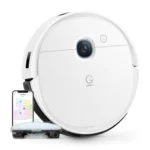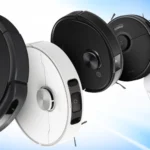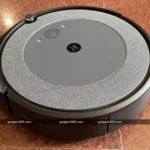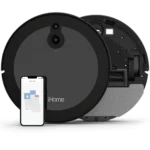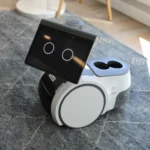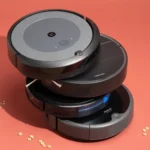Have you ever dreamed of a future where you can simply give voice commands to your smart vacuum cleaner and it starts cleaning your home without you lifting a finger? Well, the good news is that this future has arrived with voice control technology for smart vacuum cleaners. But, is this technology really the future of home cleaning or just a passing trend? In this article, we will dive into the world of voice control for smart vacuum cleaners and explore its benefits, limitations, and how you can get started with it. So sit back, relax, and let’s explore the world of voice-controlled smart vacuum cleaners.
What is Voice Control?
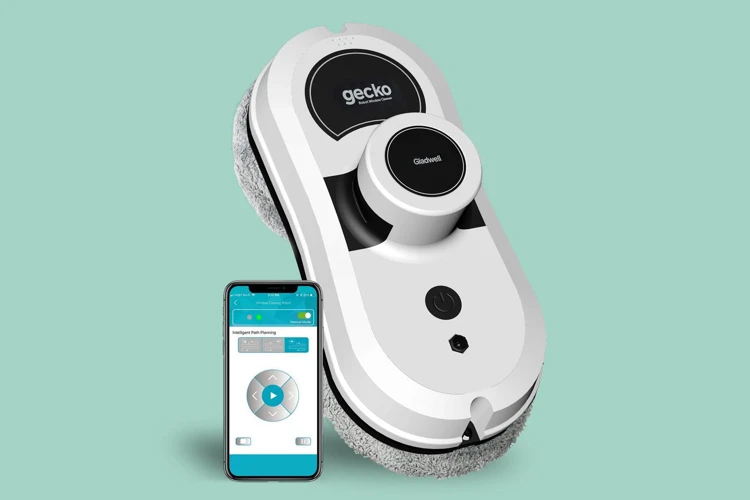
Voice control has become an increasingly popular feature in the world of technology, providing users with hands-free control over their devices. With just the sound of one’s voice, it is possible to perform tasks such as setting reminders, sending messages, and even controlling home appliances. In relation to cleaning, voice control has also made its way to the world of vacuum cleaners, allowing homeowners to control their smart vacuums more efficiently. In this article, we will explore the concept of voice control and how it can revolutionize the way we clean our homes using smart vacuums. For more information on the benefits of voice control for smart vacuums, check out our article “Smart Vacuum Cleaners and the Benefits of Voice Control”.
What are Smart Vacuum Cleaners?
Smart vacuum cleaners are the latest technological innovation in home cleaning. These devices are designed to automatically clean floors, carpets, and other surfaces without any human intervention. They are equipped with advanced sensors, brushes, and motors that can effectively collect dust, dirt, and debris from different surfaces. Here are some key features of smart vacuum cleaners:
- Automatic Cleaning: Smart vacuum cleaners are equipped with sensors and mapping technology that allows them to navigate around furniture, walls, and other obstacles in your home. They can also avoid falling down stairs or other hazardous areas.
- Advanced Brush Systems: Smart vacuum cleaners have unique brush systems that can effectively clean different surfaces such as hardwood floors, carpets, or tiles. These brushes are designed to remove dirt, debris and pet hair with ease.
- HEPA Filters: Smart vacuum cleaners also feature high-efficiency particulate air (HEPA) filters that can capture tiny particles such as pollen, dust mites, and pet dander. This is particularly beneficial for people with allergies or respiratory issues.
- Mobile App Control: Some smart vacuum cleaners can be controlled using a mobile app, giving you the ability to start, stop, or schedule cleaning from anywhere. This feature is particularly helpful if you have pets that shed frequently or if you want to clean up before guests arrive.
Smart vacuum cleaners have become increasingly popular due to their advanced features and ease of use. With the advent of voice control technology, they have become even more convenient and efficient for homeowners looking to simplify their cleaning routines. Check out our article on /smart-vacuum-voice-control-explained/ to learn more about how voice control works with smart vacuum cleaners.
How Does Voice Control Work for Smart Vacuum Cleaners?
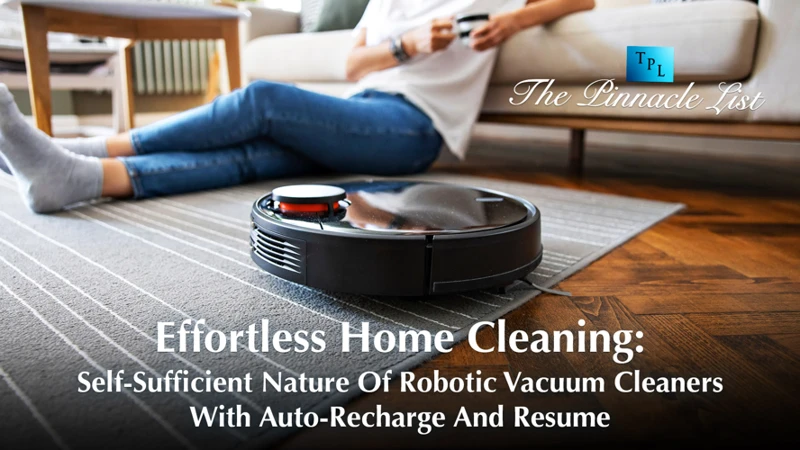
Smart vacuum cleaners with voice control functionality allow you to control your cleaning robot hands-free and with just your voice. With advancements in AI and natural language processing, voice control technology has become more sophisticated, allowing homeowners to operate their smart vacuum cleaner with greater ease and efficiency.
Voice control for smart vacuum cleaners works by connecting the cleaning robot to a voice assistant or smart speaker that is compatible with the vacuum cleaner’s operating system. Once connected, the user can simply give voice commands to start, stop or pause the cleaning process. It can be as simple as saying “Alexa, turn on the vacuum cleaner” and the cleaning robot will start working.
This innovative technology makes it possible to control your smart vacuum cleaner without the need for a physical remote or even having to be in the same room. You can give voice commands to start cleaning while you are relaxing on your couch, cooking in the kitchen or walking around the house.
Another benefit of voice control for smart vacuum cleaners is that it allows you to specify cleaning modes or patterns by simply saying, for example: “Hey Google, ask the vacuum cleaner to clean in zigzag mode”. This can save you time and energy, allowing you to tailor the cleaning process to your specific needs.
Voice control technology can also give you real-time updates on the status of the cleaning process, such as how much battery life the vacuum cleaner has left or how much time is remaining until the cleaning is complete.
Voice control technology has revolutionized the way homeowners interact with their smart vacuum cleaners, making the cleaning process more efficient, convenient, and hands-free than ever before.
If you want to learn more about smart vacuum cleaners with voice control functionality, check out our article on Smart Vacuum Cleaners with Voice Control. Alternatively, if you’re interested in knowing the difference between smart and regular vacuum cleaners, read our article on Smart vs regular vacuum cleaners.
Benefits of Using Voice Control for Smart Vacuum Cleaners
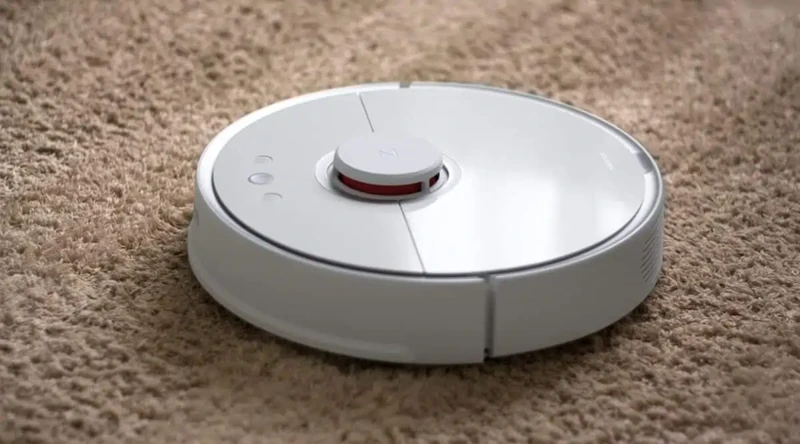
Without a doubt, one of the most notable conveniences of our modern time is the introduction of smart devices into our homes. With the advancement of technology, we can now operate many devices with just our voices, making daily tasks much easier to manage. Smart vacuum cleaners are no exception, and with the added feature of voice control, cleaning your home has become an even more streamlined and effortless process. Let’s explore some of the advantages of incorporating voice control into your smart vacuum cleaning routine.
1. Hands-Free Convenience
One of the top benefits of using voice control for smart vacuum cleaners is the hands-free convenience it offers. With traditional methods of cleaning, users would have to manually operate the vacuum cleaner, which can be time-consuming and tiring. Here’s a closer look at the hands-free convenience of using voice control:
| Advantages of Hands-Free Vacuum Cleaning | Disadvantages of Manual Vacuum Cleaning |
|---|---|
| Effortless Cleaning: With voice control, users can start, stop, pause, and resume their smart vacuum cleaners without having to bend, twist, or move around. This means that they can clean all areas of their home without any physical exertion. | Physical Effort: Manual vacuum cleaning requires physical movement and can be tiring, especially if the user has to carry a heavy vacuum around the house. It can also be difficult for individuals with physical disabilities or medical conditions. |
| Multi-Tasking: Users can continue with their other household chores or relax while their smart vacuum cleaner goes to work. This frees up their time and allows them to complete other tasks while still maintaining a clean home. | Single-Tasking: Manual vacuum cleaning requires the user’s full attention, which means they cannot perform any other tasks while cleaning. They have to be physically present and keep an eye on the vacuum cleaner at all times. |
| No Need to Supervise: With voice control, users can command their smart vacuum cleaner to clean specific areas of their home without the need for supervision. This means they can leave the room or even the house and trust that their smart vacuum cleaner will do the job. | Supervision Required: Manual vacuum cleaning requires constant supervision to ensure that all areas are cleaned properly. It can be time-consuming to move the vacuum back and forth over the same area several times to remove all the dirt and debris. |
The hands-free convenience of using voice control for smart vacuum cleaners is a game-changer for homeowners who want a clean home without the physical strain of manual vacuum cleaning. It allows users to multi-task, relax, and trust that their smart vacuum cleaner will clean all areas of their home without their direct supervision.
2. Streamlined Cleaning
One of the biggest benefits of using voice control for smart vacuum cleaners is streamlined cleaning. With the ability to control your vacuum cleaner with voice commands, you can easily clean your home without having to manually push the vacuum cleaner around. This can make cleaning less of a hassle and more efficient, ultimately saving you time and energy.
Additionally, with voice control, you can easily customize your cleaning schedule and preferences. Many smart vacuum cleaners offer features such as scheduling, room mapping, and customized cleaning modes. You can use voice commands to adjust these settings on the fly, ensuring that your cleaning routine is always optimized for your specific needs.
To illustrate the benefits of streamlined cleaning with voice control, consider the following table:
| Traditional Cleaning | Voice-Controlled Cleaning |
|---|---|
| Manually push the vacuum cleaner around the house | Control the vacuum cleaner with simple voice commands |
| Need to physically adjust settings on the vacuum cleaner | Quickly adjust cleaning settings with voice commands |
| Clean on a set schedule or only when you have time | Customize your cleaning schedule and preferences with ease |
As you can see, voice-controlled cleaning offers a streamlined and convenient approach to home cleaning. By eliminating the need for manual labor and offering customizable settings at your fingertips, smart vacuum cleaners with voice control are the future of home cleaning.
3. Saves Time and Energy
Using voice control for your smart vacuum cleaner can save you time and energy in multiple ways. Here are some notable examples:
- Hands-free operation: With voice control, there’s no need for physically standing beside and operating the vacuum cleaner. You can simply give commands from your couch, bed or any other comfortable place.
- No more bending: Traditional vacuum cleaners require a lot of bending and adjusting to different parts of the house. With voice control, you can reduce your physical strain and help minimize the risk of back pain and injury.
- Faster cleaning: Voice-control functions allow you to quickly switch between rooms or areas of the house without manually adjusting the vacuum’s settings. Instead of pausing to fidget with buttons or switches, you can simply tell your smart vacuum cleaner where to go.
- Efficient cleaning: By using voice control, you can ensure that your smart vacuum cleaner covers all of the areas and rooms that you want to be cleaned. Whether you want to clean only the kitchen or the whole house, voice commands offer a fast and efficient way to manage your cleaning schedule without wasted effort or forgotten corners.
- Reduced energy consumption: Smart vacuum cleaners are designed to consume less power while cleaning your home. Using voice control, you can switch off your vacuum cleaner when you’re done cleaning or when you need to pause it for some time. This way, you can save some energy while making your house shine.
Using voice control for your smart vacuum cleaner can make cleaning much more convenient, quick, and efficient. By minimizing physical strain and reducing wasted effort, you can keep your home clean without sacrificing your time or energy.
4. Better Cleaning Performance
One of the major benefits of using voice control for smart vacuum cleaners is the improvement in cleaning performance. By using voice commands, users can easily control and monitor the cleaning process with precision, resulting in a deeper and more thorough clean.
Here are some ways in which voice control can help improve the cleaning performance of your smart vacuum cleaner:
- Precise Navigation: With voice commands, users can direct their smart vacuum cleaner to specific areas that need extra attention. This allows for a more targeted approach to cleaning, ensuring that every corner of your home is properly cleaned.
- Increased Suction Power: Voice control also makes it easy to adjust the suction power of your smart vacuum cleaner on the fly. This means that you can increase suction power on carpets and other areas where dirt and debris tend to accumulate, resulting in a more thorough clean.
- Customized Cleaning: With voice control, users can easily create custom cleaning schedules and profiles for their smart vacuum cleaners. This allows for more targeted cleaning based on specific needs and preferences, resulting in a cleaner and more comfortable home.
- Real-Time Monitoring: Voice control also allows for real-time monitoring of the cleaning process. Users can receive alerts when the smart vacuum cleaner encounters obstacles or finishes cleaning a specific area, ensuring that nothing is missed and that the cleaning process is as efficient as possible.
In addition to these benefits, voice control can also help prolong the life of your smart vacuum cleaner by ensuring that it is being used properly and is not being overloaded or used too frequently. Implementing voice control for your smart vacuum cleaner can help take your cleaning routine to the next level, resulting in a cleaner, healthier, and more comfortable home.
Challenges and Limitations of Voice Control for Smart Vacuum Cleaners
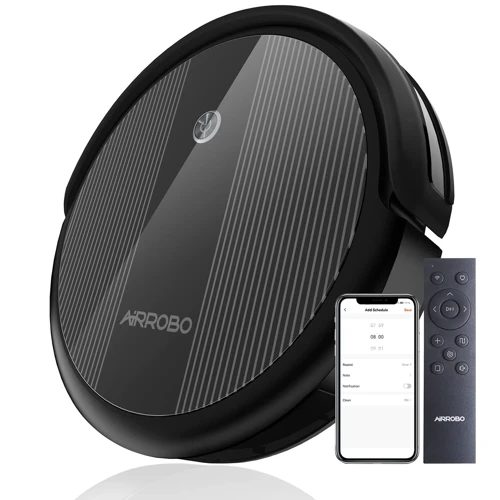
While voice control for smart vacuum cleaners has its advantages, there are also challenges and limitations that users may encounter. In this section, we will explore some of the issues that may arise when using voice commands to control your vacuum cleaner. From compatibility issues to voice recognition accuracy, it’s important to be aware of the potential drawbacks of this technology. Nevertheless, with proper understanding and patience, these limitations can be overcome to make your cleaning experience even better.
1. Compatibility and Connectivity Issues
One of the key challenges associated with using voice control for smart vacuum cleaners is compatibility and connectivity issues. Not all smart vacuum cleaners support voice control technology, and not all voice assistant devices are compatible with all smart vacuum cleaners.
Incompatibility between different devices can lead to frustrations and inconvenience for users who may have to switch between different voice control systems or devices for different smart home appliances. Connectivity issues may arise due to network problems, which can cause delays or disruptions in communication between the smart vacuum cleaner and the voice assistant.
Another issue is that the smart vacuum cleaner must have an active internet connection to function properly with voice control technology. If the Wi-Fi connection is weak or unstable, the cleaning performance may also be compromised in some cases.
Lastly, some users may face language or region-specific limitations for voice control commands. If the smart vacuum cleaner or the voice assistant is not designed to support certain languages or regions, users may not be able to voice control the device effectively.
To overcome these challenges, it is important to thoroughly research and purchase a smart vacuum cleaner that is voice control compatible with your preferred voice assistant device. It is also essential to ensure that both devices are connected to a reliable Wi-Fi network with adequate speed and coverage. In some cases, users may also need to configure their network settings to ensure a smooth connection between the devices.
2. Voice Recognition Accuracy
One of the biggest challenges of using voice control for smart vacuum cleaners is the issue of voice recognition accuracy. While modern voice assistants have come a long way in terms of accurately detecting and understanding spoken words, they are still far from perfect.
Here are some of the issues with voice recognition accuracy:
- Background noise: If there is a lot of background noise in the room, the microphone may have trouble picking up your voice commands, leading to inaccurate detection or misunderstanding.
- Accents and dialects: Voice assistants are programmed to recognize certain accents and dialects, but they may struggle with others. If you have a heavy accent or dialect, the system may not be able to understand you as well as someone without one.
- Speech impediments: Similarly, if you have a speech impediment or pronounce things differently, the voice assistant may have trouble recognizing your commands.
- Language barriers: Another issue is that voice assistants are typically programmed to recognize only certain languages. If your first language is not one that the system understands, or if you switch languages frequently, accuracy may suffer.
These issues with voice recognition accuracy can be frustrating and may even discourage some people from using voice control with their smart vacuum cleaners. However, it’s important to note that these limitations are not unique to smart vacuum cleaners – they are present in all voice-controlled devices.
The good news is that there are ways to improve voice recognition accuracy:
- Ensure a quiet environment: Try to use your smart vacuum cleaner’s voice control feature in a quiet room where there is no background noise.
- Train the voice assistant: Most voice assistants have a training feature that allows you to teach them how to understand your voice better. Take advantage of this by repeating certain phrases or words until the system recognizes them more accurately.
- Speak clearly and slowly: When using voice control, speak clearly and slowly to help the system understand your commands better.
- Use concise commands: Instead of speaking in long, complex sentences, use concise commands that are easier for the system to understand.
- Upgrade to a better microphone: If you’re still having trouble with voice recognition accuracy, consider upgrading to a better microphone that can more accurately pick up your voice commands.
While voice recognition accuracy may present some challenges for those using smart vacuum cleaners, these issues are not insurmountable. With a little patience and the right tools, you can make the voice control feature work for you and enjoy the convenience of hands-free cleaning.
3. Limitations in Functionality
While using voice control for smart vacuum cleaners has many benefits, there are still some limitations in terms of functionality. Some of the key limitations include:
- Limited Command Options: While voice control may be convenient, it is still limited in terms of the number of commands that can be given. Currently, most smart vacuums can only be controlled with basic commands such as start, stop, pause, and resume.
- No Scheduled Cleaning: Another limitation is the lack of the ability to schedule cleaning sessions with voice commands. While users can start and stop cleaning using their voice, they cannot set up a schedule for when they want their smart vacuum to clean.
- No Personalization: Most smart vacuums that are compatible with voice control do not have the ability to personalize cleaning preferences such as cleaning patterns or specific areas to be cleaned. This means that the smart vacuum may not clean the way that users want it to, which can be a significant limitation.
- No Voice Feedback: Finally, it is worth noting that most smart vacuums do not provide any voice feedback when performing tasks, which can make it difficult for users to know what is happening with their vacuum at any given time.
While voice control is a convenient and streamlined way to control smart vacuums, there are still some limitations in terms of functionality. As technology continues to evolve, it is likely that these limitations will be addressed and improved upon, however for now, these limitations remain an important consideration for those looking to invest in a smart vacuum with voice control functionality.
How to Get Started with Voice Control for Your Smart Vacuum Cleaner
Are you ready to experience the convenience of voice control for your smart vacuum cleaner? Setting up this advanced feature may seem daunting at first, but with the right guidance, it can be a breeze. In this section, we will guide you through the steps to get started with voice control for your smart vacuum cleaner. From checking for compatibility to connecting with your voice assistant, we will cover everything you need to know to start cleaning your home with voice commands. So, let’s get started!
1. Check for Compatibility
Before delving into the world of voice-controlled smart vacuum cleaners, it’s important to understand how to ensure that your device is compatible with voice control technology. Checking for compatibility involves checking if your vacuum cleaner is capable of being integrated with voice assistants such as Amazon Alexa, Google Assistant or Apple Siri. Not all smart vacuum cleaners are created equal, and not all can be controlled with voice commands.
The first step to checking compatibility is to consult the user manual or manufacturer’s website. Most smart vacuum cleaners have a list of compatible voice assistants and devices listed under the specifications tab. If you cannot find this information, you can reach out to customer support for assistance.
To make it easier for you, we have created a table below outlining the compatibility of some popular smart vacuum cleaners with different voice assistants:
| Brand | Model | Amazon Alexa | Google Assistant | Apple Siri |
|---|---|---|---|---|
| iRobot | Roomba i7+ | Yes | Yes | No |
| Ecovacs | Deebot N79S | Yes | Yes | No |
| Shark | ION ROBOT R75 | Yes | Yes | No |
| Neato Robotics | D7 Connected | Yes | Yes | No |
| Roborock | S6 MaxV | Yes | Yes | Yes |
As you can see from the table, some smart vacuum cleaners are compatible with only some voice assistants, while others are compatible with all three. It’s important to note that compatibility can also be affected by the region and language settings you have enabled on your device.
Ensuring compatibility is essential to ensure seamless integration of smart vacuum cleaners with voice control technology. No one wants to go through the trouble of setting up their device only to find out that their voice assistant won’t work with it. Now that you know how to check compatibility, you can start your journey of hands-free, voice-controlled home cleaning.
2. Set Up Your Smart Vacuum Cleaner
Setting up your smart vacuum cleaner is an essential step in ensuring that voice control works properly. Here are the steps you need to follow for setting up your smart vacuum cleaner:
Step 1: Unbox the vacuum cleaner and take out all the components, including the charging dock, filter, brush, and remote control. Carefully read the instructions manual to familiarize yourself with the parts and their functions.
Step 2: Find a suitable location for the charging dock. The dock should be placed in a central location within the range of your home’s Wi-Fi. It should be placed on a flat surface and away from direct sunlight and obstacles.
Step 3: Charge the vacuum cleaner’s battery by attaching it to the charging dock. Most smart vacuum cleaners usually come with the battery partially charged, but it’s advisable to charge it fully before use.
Step 4: Install the filter and brush onto the vacuum cleaner. The filter should be fitted into the filter compartment, and the brush should be attached to the underside of the vacuum cleaner. Make sure both the filter and brush fit correctly to avoid any performance issues.
Step 5: Connect the vacuum cleaner to the Wi-Fi network by following the instructions in the user manual. Make sure to enter the correct Wi-Fi password to avoid connectivity issues.
Step 6: Download and install the voice assistant app on your smartphone or tablet. This app will allow you to connect your vacuum cleaner to your voice assistant and control it via voice commands.
Step 7: Connect the voice assistant app to your smart vacuum cleaner by following the instructions provided in the app. Not all vacuum cleaners are compatible with all voice assistants, so make sure you check for compatibility before purchasing a vacuum cleaner.
Once you have set up your smart vacuum cleaner correctly, you can now start using voice control to command your vacuum cleaner to clean your home without the need for physical input.
3. Connect with Your Voice Assistant
Once you have ensured that your smart vacuum cleaner is compatible with your preferred voice assistant, it’s time to connect the two devices. Here are the steps to connect your voice assistant to your smart vacuum cleaner:
1. Open the compatible app: To begin, open the compatible app for your smart vacuum cleaner. This app can usually be downloaded from the app store on your smartphone or tablet.
2. Navigate to the settings: Once you have opened the app, navigate to the settings menu. This can usually be found by clicking on the three horizontal lines in the top left corner of the screen.
3. Select the voice assistant option: After accessing the settings menu, look for the option to connect to your voice assistant. This may be labeled as “voice control” or “compatibility.”
4. Follow the prompts: Once you have selected the voice assistant option, the app will guide you through the process of connecting your smart vacuum cleaner to your voice assistant. Follow the prompts on the screen to complete the setup.
5. Test the connection: After the setup is complete, test the connection by giving a voice command to your smart vacuum cleaner. If it responds to your command, you have successfully connected your voice assistant to your smart vacuum cleaner.
Connecting your smart vacuum cleaner to your voice assistant has never been easier. With just a few simple steps, you can enjoy the convenience of hands-free cleaning with voice commands. However, it is important to note that there may be some differences in the setup process depending on the brand and model of your smart vacuum cleaner, so be sure to consult the user manual or manufacturer’s website for more detailed instructions.
4. Start Cleaning with Voice Commands
Now that you have set up your smart vacuum cleaner to work with voice control, you can start cleaning your home with simple voice commands. Here are some examples of basic voice commands you can use to control your smart vacuum cleaner:
- “Hey [voice assistant], start the vacuum.” This command will start your smart vacuum cleaner.
- “Hey [voice assistant], pause the vacuum.” If you need to momentarily pause the cleaning, this command will come in handy.
- “Hey [voice assistant], resume the vacuum.” Once you’re ready to continue cleaning, use this command to resume cleaning.
- “Hey [voice assistant], stop the vacuum.” When cleaning is done, this command will stop your smart vacuum cleaner from running.
It’s important to remember that the specific commands may vary depending on the brand of smart vacuum cleaner you have and the voice assistant you use. It’s important to familiarize yourself with the specific commands needed for your device and to read the user manual carefully.
Advanced Voice Commands
Beyond basic voice commands, some smart vacuum cleaners come with a range of advanced voice commands. For example, you may be able to ask your device to clean specific areas or rooms in your house. You could say, “Hey [voice assistant], clean the living room” or “Hey [voice assistant], clean the kitchen and dining room.” Some smart vacuum cleaners may also allow you to customize cleaning schedules, adjust suction power, and more – all through voice commands.
While voice control for smart vacuum cleaners may have some limitations, it’s clear that it’s the future of home cleaning. With the convenience, speed and hands-free control of your cleaning device, you can simply relax and focus on other things. So why not try adding voice control to your smart vacuum cleaner today?
Conclusion
In conclusion, it is clear that voice control for smart vacuum cleaners is the future of home cleaning. Thanks to advancements in technology, homeowners can now enjoy hands-free convenience when it comes to keeping their homes clean. With just a few simple voice commands, you can instruct your vacuum cleaner to clean your floors, carpets, and other surfaces. This technology has revolutionized the way we clean our homes, and it is only going to keep getting better.
However, it’s important to note that there are still some challenges and limitations to voice control for smart vacuum cleaners. Compatibility and connectivity issues can be a problem, and there may also be limitations in functionality. Additionally, voice recognition accuracy can be a challenge, although this issue is gradually being resolved with improvements in technology.
Despite these limitations, the benefits of using voice control for smart vacuum cleaners far outweigh the challenges. Hands-free convenience, streamlined cleaning, time and energy savings, and better cleaning performance are just some of the benefits that homeowners can enjoy. By following the steps outlined in this article, you can get started with voice control for your smart vacuum cleaner and experience the benefits for yourself.
Ultimately, the future of home cleaning is all about making things easier for homeowners. Voice control is one such technology that offers immense benefits and convenience. While there may be some challenges to overcome, the future certainly looks bright for this exciting new technology. So why not give it a try with your own smart vacuum cleaner and see what all the fuss is about?
Frequently Asked Questions
1. Can all smart vacuum cleaners be controlled by voice commands?
No, not all smart vacuum cleaners can be controlled by voice commands. Make sure that the vacuum cleaner you choose is voice-enabled and compatible with your voice assistant, such as Amazon Alexa, Google Assistant or Siri.
2. Do I need a specific voice assistant to control my smart vacuum cleaner?
It depends on the brand and model of your vacuum cleaner. Some smart vacuum cleaners are compatible with multiple voice assistants, while others may only work with one. Check with the manufacturer or manual for more information.
3. Does voice control for smart vacuum cleaners work well in noisy environments?
It depends on the voice recognition technology used by your vacuum cleaner and voice assistant. Some models may struggle to recognize voice commands in noisy environments, while others have noise-cancellation features that can help improve accuracy.
4. Can I schedule cleaning sessions using voice commands?
Yes, many smart vacuum cleaners allow you to set up cleaning schedules using voice commands. Simply ask your voice assistant to schedule a cleaning session at a specific time and day.
5. Are there any privacy concerns with using voice control for smart vacuum cleaners?
As with any technology that uses voice recognition, there may be privacy concerns with using voice control for smart vacuum cleaners. Make sure you understand the data privacy policies of the manufacturer and voice assistant before using this feature.
6. How long does it take to set up voice control for my smart vacuum cleaner?
The setup process will vary depending on the brand and model of your smart vacuum cleaner and voice assistant. However, most manufacturers provide detailed instructions and it shouldn’t take more than a few minutes to set up.
7. Can I control my smart vacuum cleaner with my smartphone as well as voice commands?
Yes, many smart vacuum cleaners can be controlled using a smartphone app in addition to voice commands. This can be useful if you’re not in the same room as the vacuum cleaner or prefer a visual interface.
8. Are there any additional costs associated with using voice control for my smart vacuum cleaner?
No, there are no additional costs associated with using voice control for your smart vacuum cleaner beyond the initial investment in the vacuum cleaner and voice assistant.
9. Can I customize the voice commands for my smart vacuum cleaner?
It depends on the model and brand of your vacuum cleaner and voice assistant. Some may allow you to customize voice commands, while others have a set list of predefined commands.
10. Is it safe to have my smart vacuum cleaner running while I’m not at home?
It’s generally safe to have your smart vacuum cleaner running while you’re not at home. However, it’s important to follow safety guidelines provided by the manufacturer and avoid leaving any obstacles on the floor that could trip the vacuum cleaner.

